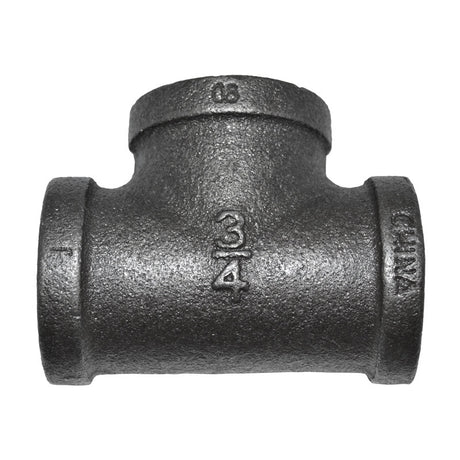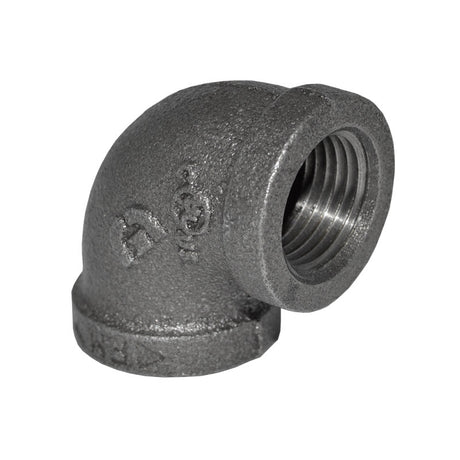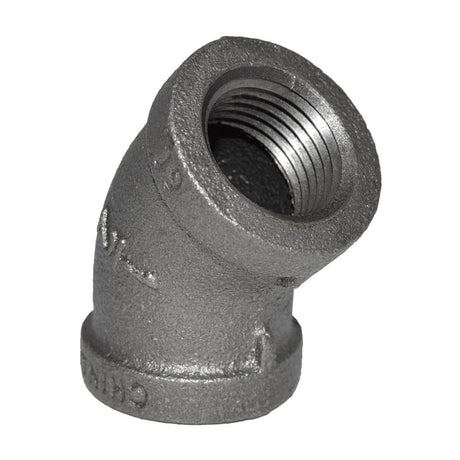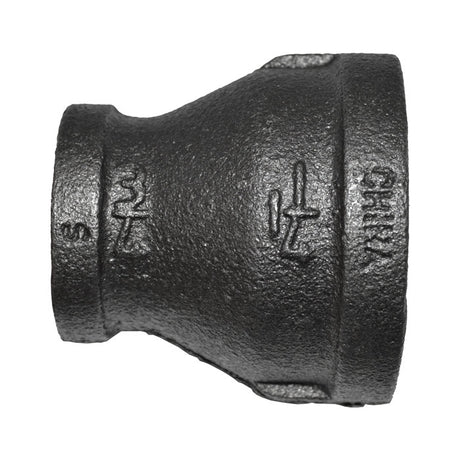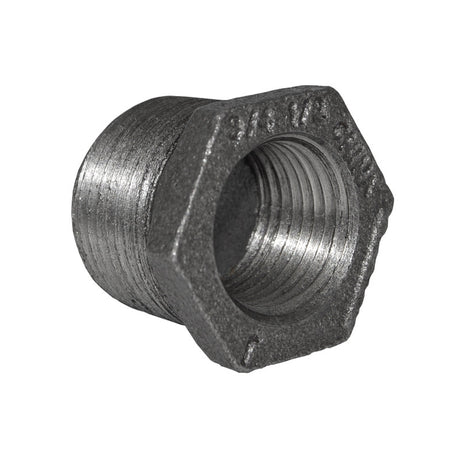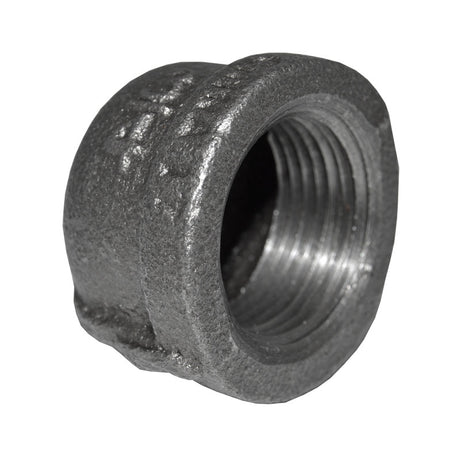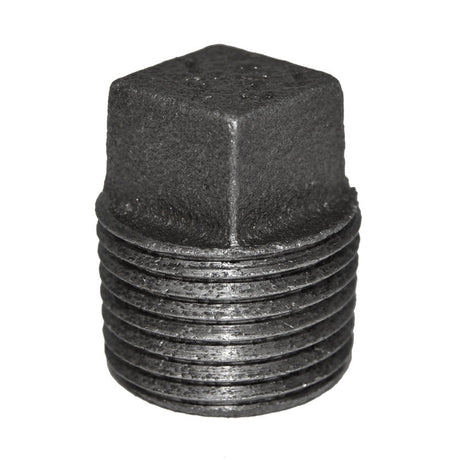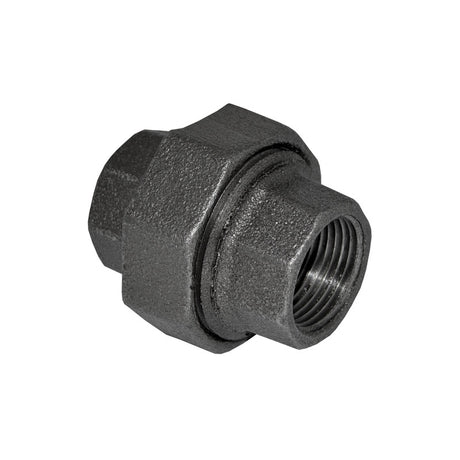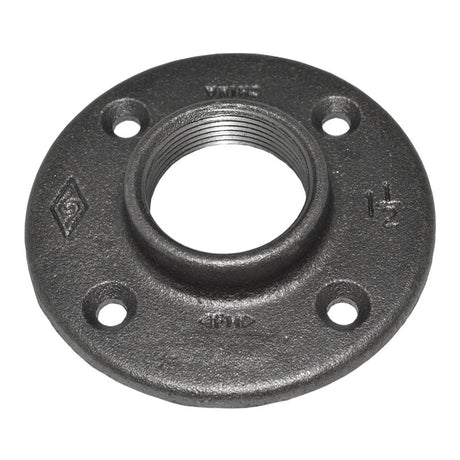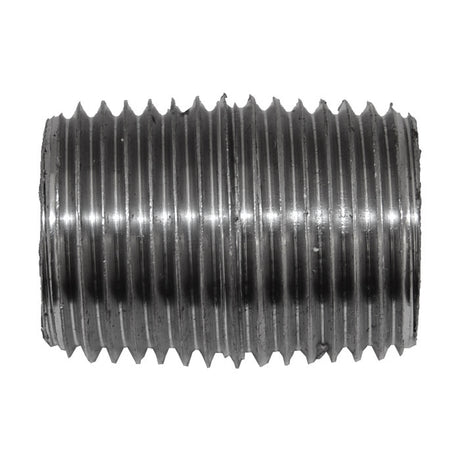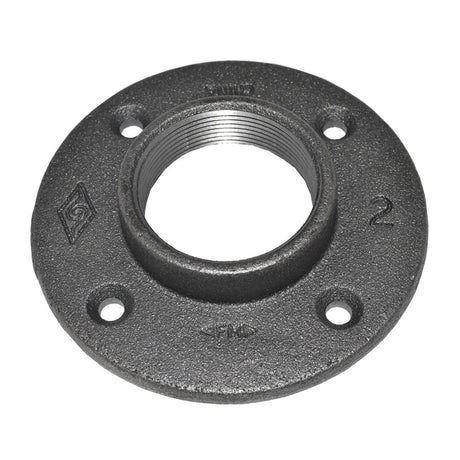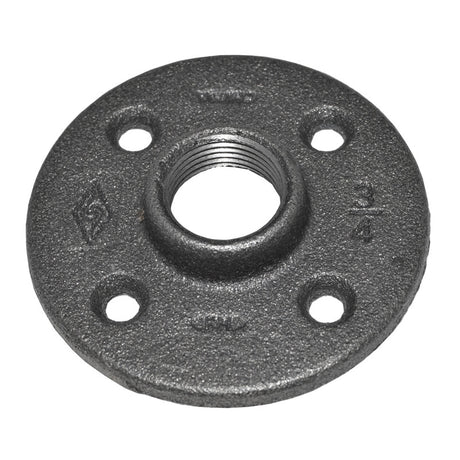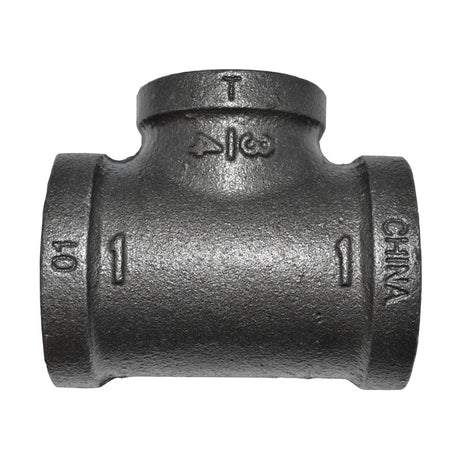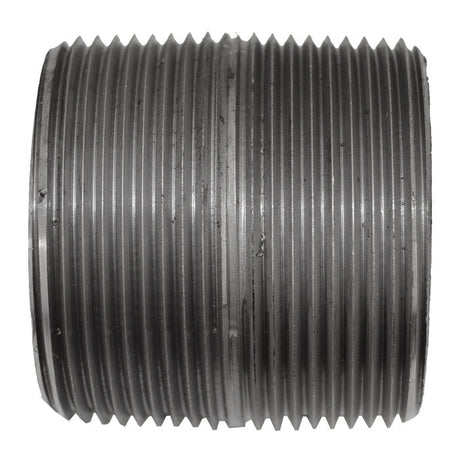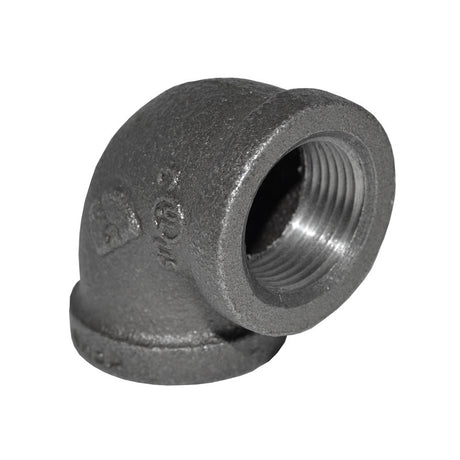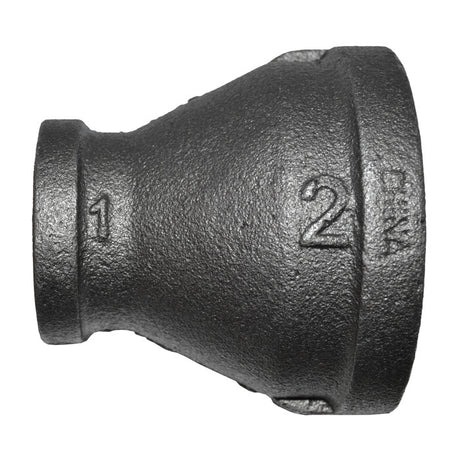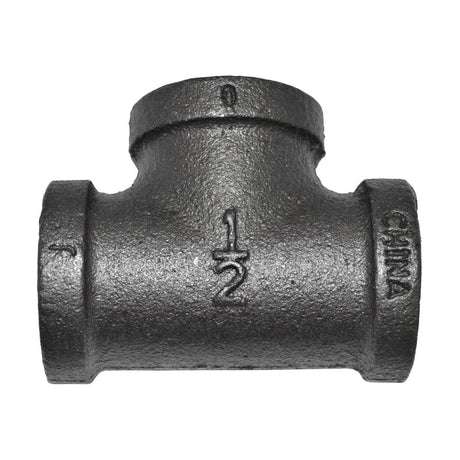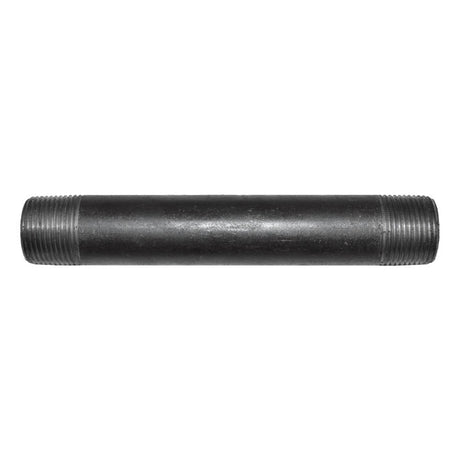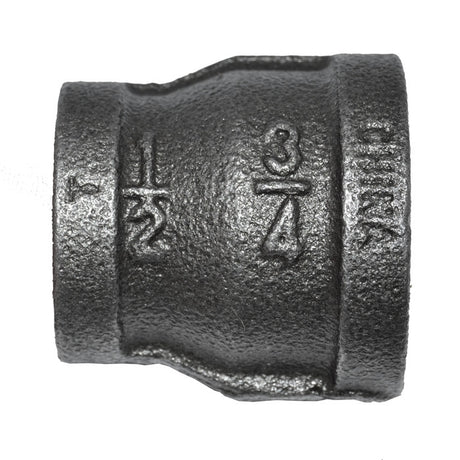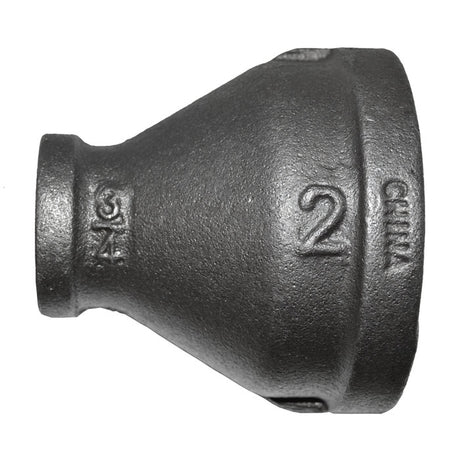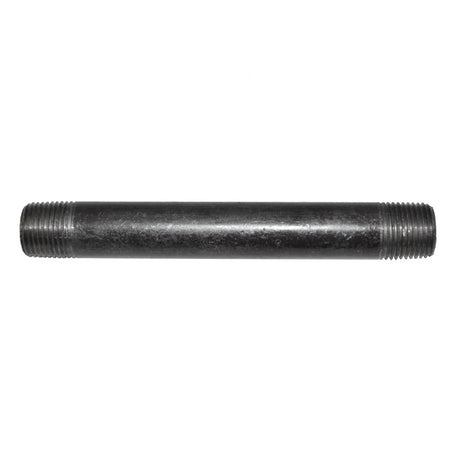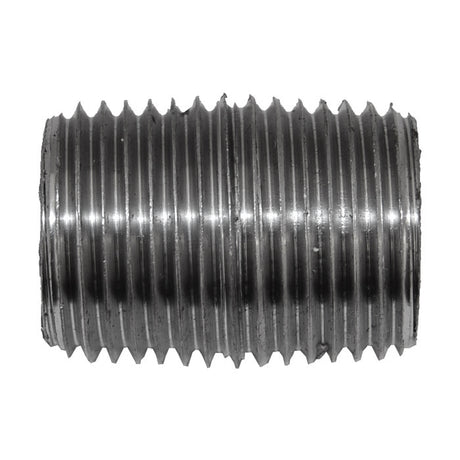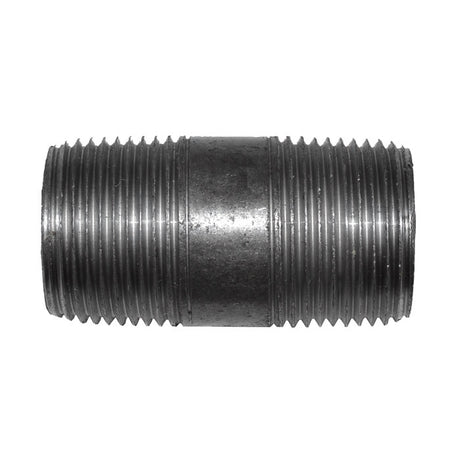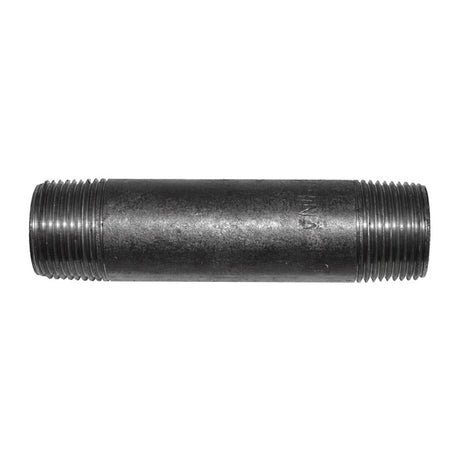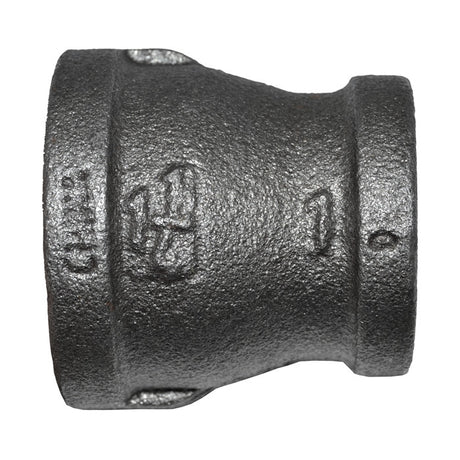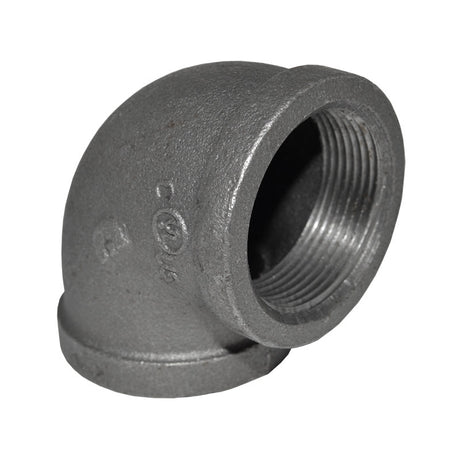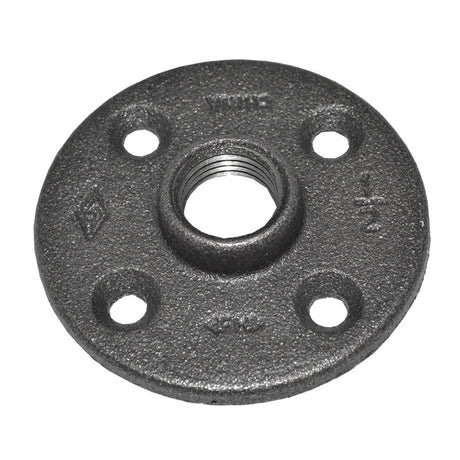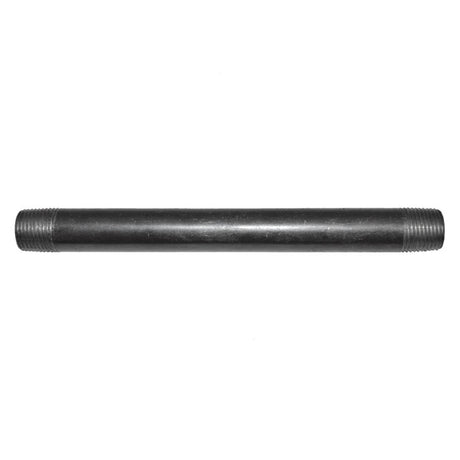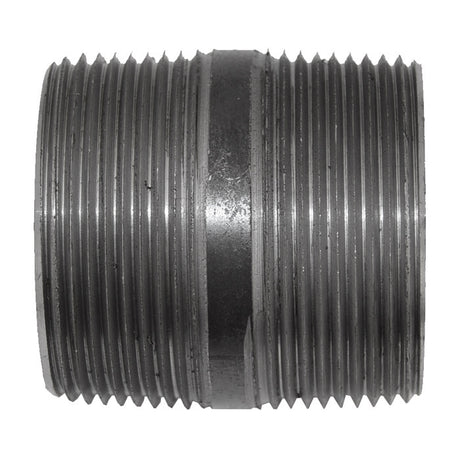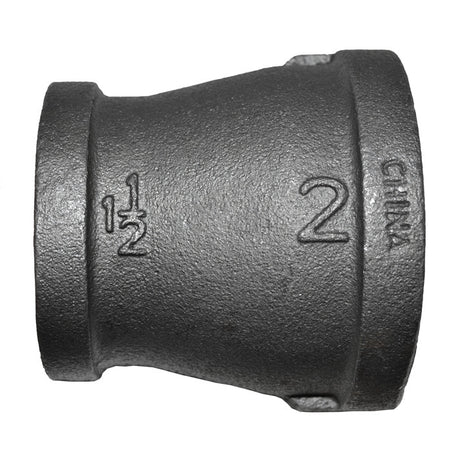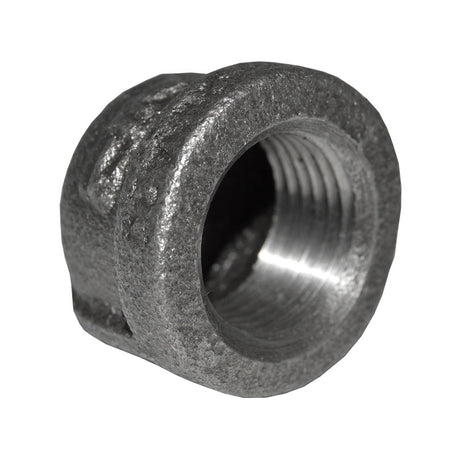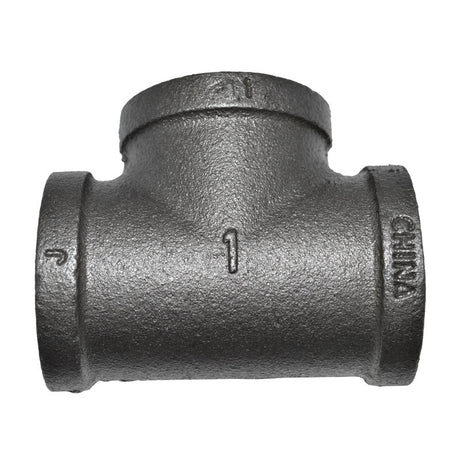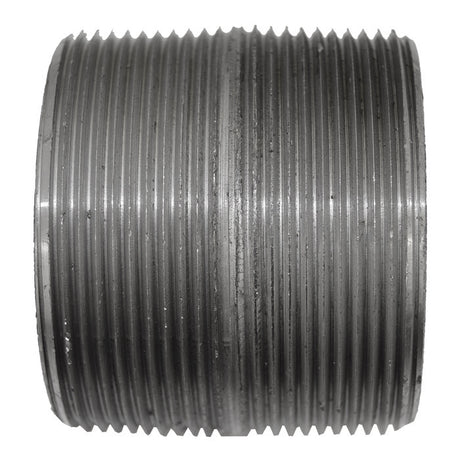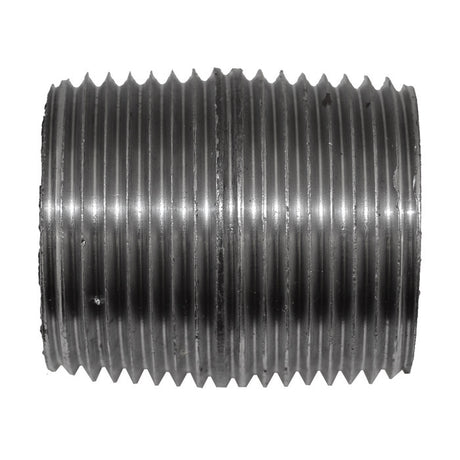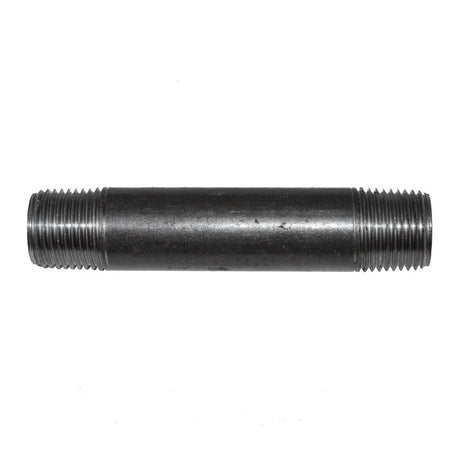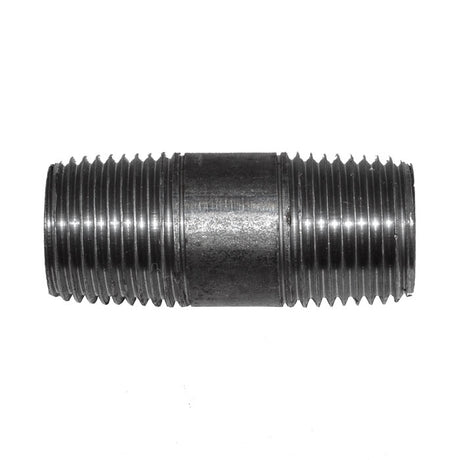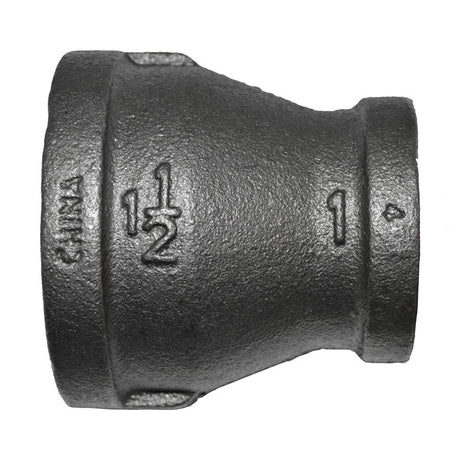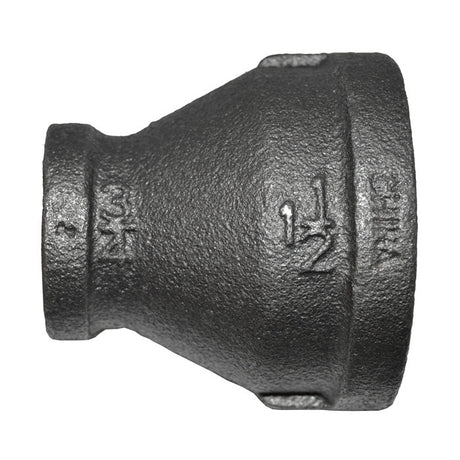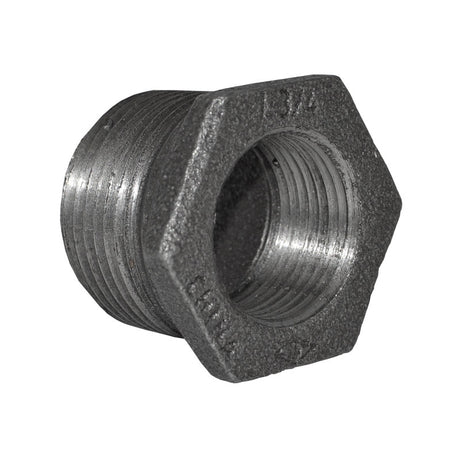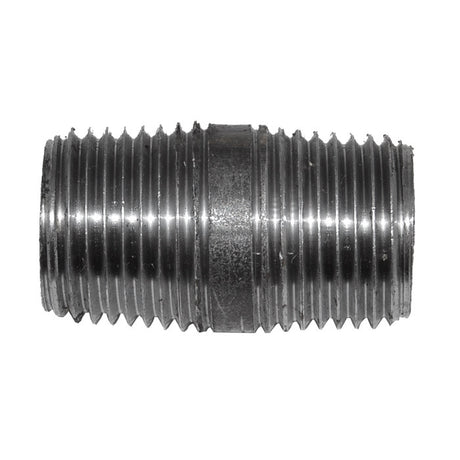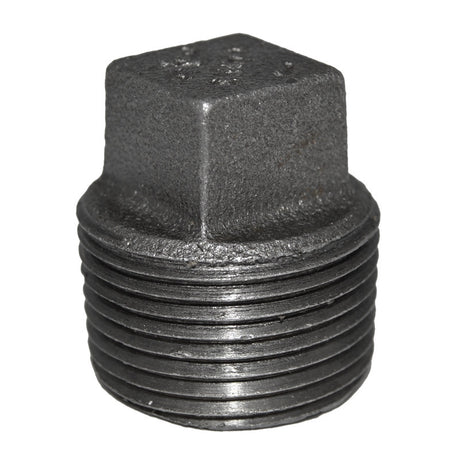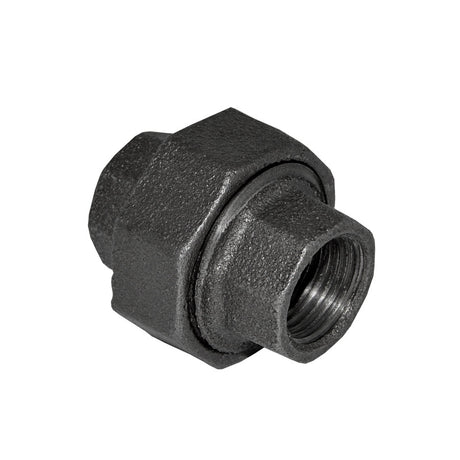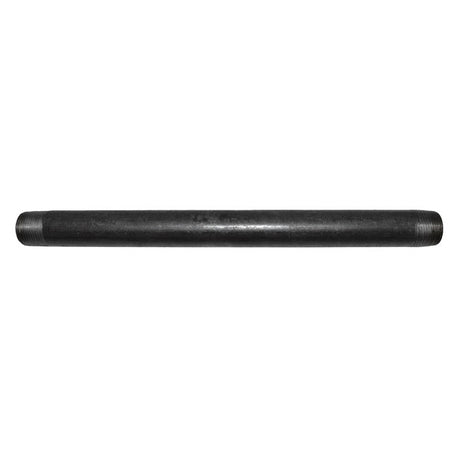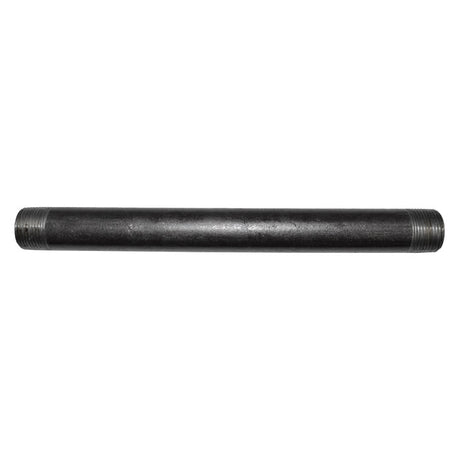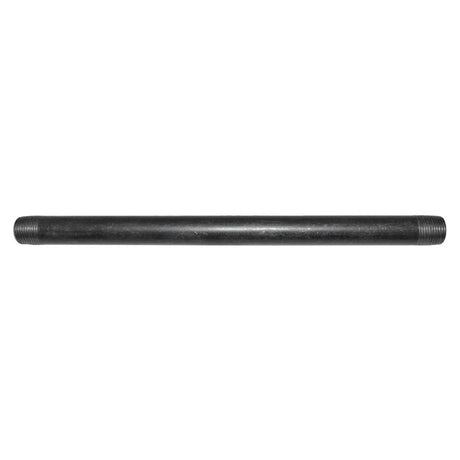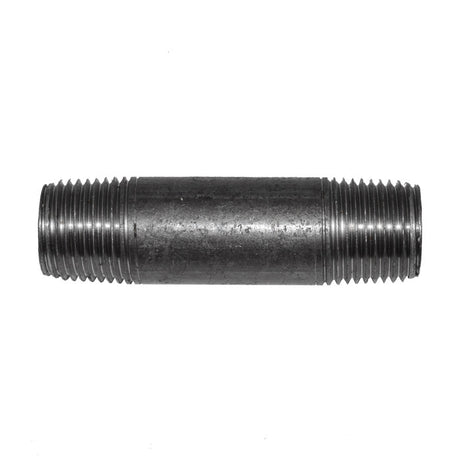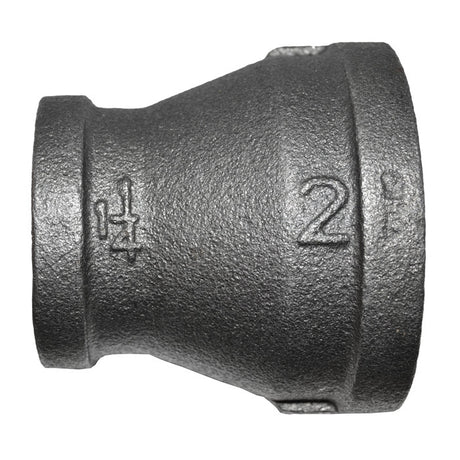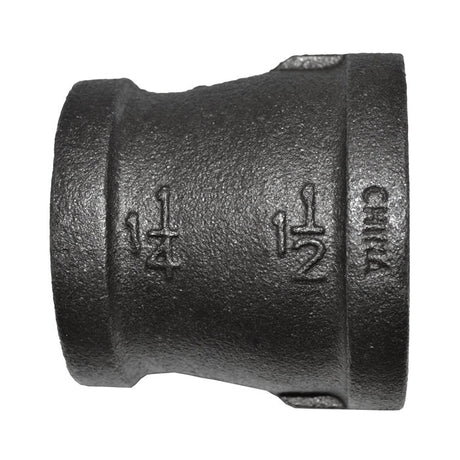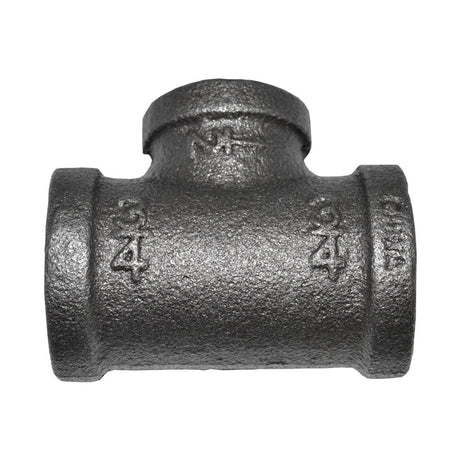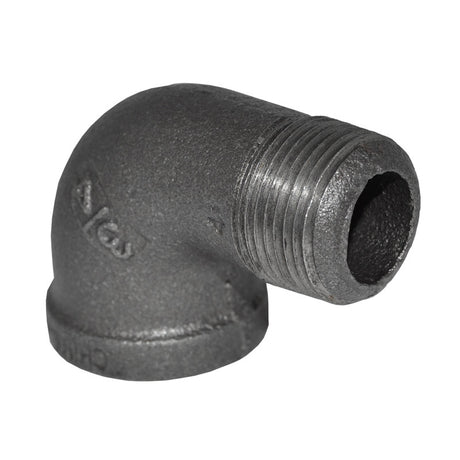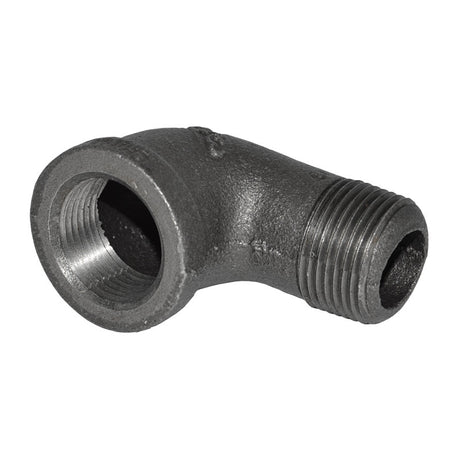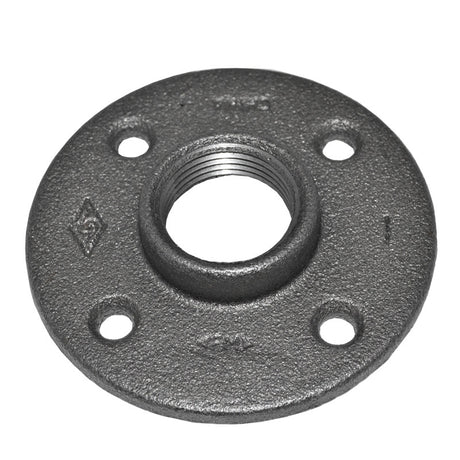-
1-1/2" Black Malleable Iron Floor Flange (BMFF112 / 35708)
$16.87Unit price /Unavailable -
3/4" Black Malleable Iron Tee Fitting (BMT34 / 35405)
$5.92Unit price /Unavailable -
1/2" Black Malleable Iron 90 Elbow (BM9012 / 35304)
$3.22Unit price /Unavailable -
2" Black Malleable Iron Floor Flange (BMFF2 / 35709)
$24.61Unit price /Unavailable -
3/4" x Close Black Malleable Iron Nipple (BSN34CLO / 10500)
$2.64Unit price /Unavailable -
3/4" Black Malleable Iron Floor Flange (BMFF34 / 35705)
$12.48Unit price /Unavailable -
1" x 1" x 3/4" Black Malleable Iron Tee Fitting (BMT1134 / 35438)
$11.20Unit price /Unavailable -
1-1/2" x Close Black Malleable Iron Nipple (BSN112CLO / 10800)
$5.09Unit price /Unavailable -
-
3/4" Black Malleable Iron 90 Elbow (BM9034 / 35305)
$3.90Unit price /Unavailable -
1-1/4" x 3/4" Black Malleable Iron Reducer Coupling (BMCO11434 / 35032)
$10.24Unit price /Unavailable -
2" x 1" Black Malleable Iron Reducer Coupling (BMCO21 / 35042)
$20.33Unit price /Unavailable -
1/2" Black Malleable Iron Tee Fitting (BMT12 / 35404)
$3.74Unit price /Unavailable -
3/4" x 6" Black Malleable Iron Nipple (BSN346 / 10560)
$5.77Unit price /Unavailable -
3/4" x 1/2" Black Malleable Iron Reducer Coupling (BMCO3412 / 35023)
$5.73Unit price /Unavailable -
2" x 3/4" Black Malleable Iron Reducer Coupling (BMCO234 / 35043)
$20.66Unit price /Unavailable -
1/2" x 6" Black Malleable Iron Nipple (BSN126 / 10460)
$4.17Unit price /Unavailable -
1/2" x Close Black Malleable Iron Nipple (BSN12CLO / 10400)
$2.37Unit price /Unavailable -
3/4" x 2" Black Malleable Iron Nipple (BSN342 / 10520)
$2.87Unit price /Unavailable -
3/4" Black Iron Union - FPT x FPT (BMU34 / 35105)
$12.57Unit price /Unavailable -
3/4" x 4" Black Malleable Iron Nipple (BSN344 / 10540)
$4.07Unit price /Unavailable -
1-1/4" x 1" Black Malleable Iron Reducer Coupling (BMCO1141 / 35031)
$10.05Unit price /Unavailable -
1-1/2" Black Malleable Iron 90 Elbow (BM90112 / 35308)
$14.60Unit price /Unavailable -
1/2" Black Malleable Iron Floor Flange (BMFF12 / 35704)
$11.58Unit price /Unavailable -
1/2" x 8" Black Malleable Iron Nipple (BSN128 / 10468)
$6.83Unit price /Unavailable -
1-1/2" x 2" Black Malleable Iron Nipple (BSN1122 / 10820)
$6.67Unit price /Unavailable -
2" x 1-1/2" Black Malleable Iron Reducer Coupling (BMCO2112 / 35040)
$18.79Unit price /Unavailable -
1/2" Black Malleable Iron Cap (BMC12 / 35504)
$3.22Unit price /Unavailable -
1" Black Malleable Iron Tee Fitting (BMT1 / 35406)
$9.79Unit price /Unavailable -
2" x Close Black Malleable Iron Nipple (BSN2CLO / 10900)
$6.96Unit price /Unavailable -
-
1/2" x 4" Black Malleable Iron Nipple (BSN124 / 10440)
$3.14Unit price /Unavailable -
1/2" x 2" Black Malleable Iron Nipple (BSN122 / 10420)
$2.35Unit price /Unavailable -
1-1/2" x 1" Black Malleable Iron Reducer Coupling (BMCO1121 / 35036)
$15.26Unit price /Unavailable -
1/2" Black Malleable Iron Plug (BMP12 / 35604)
$2.93Unit price /Unavailable -
3/4" x 1/2" Black Malleable Iron Hex Bushing (BMB3412 / 35123)
$5.20Unit price /Unavailable -
1-1/2" x 3/4" Black Malleable Iron Reducer Coupling (BMCO11234 / 35037)
$15.08Unit price /Unavailable -
1" x 3/4" Black Malleable Iron Hex Bushing (BMB134 / 35127)
$5.38Unit price /Unavailable -
1/2" x 1-1/2" Black Malleable Iron Nipple (BSN12112 / 10415)
$2.12Unit price /Unavailable -
3/4" Black Malleable Iron Plug (BMP34 / 35605)
$2.93Unit price /Unavailable -
1/2" Black Iron Union - FPT x FPT (BMU12 / 35104)
$8.69Unit price /Unavailable -
-
3/4" x 10" Black Malleable Iron Nipple (BSN3410 / 10570)
$9.34Unit price /Unavailable -
1/2" x 12" Black Malleable Iron Nipple (BSN1212 / 10472)
$9.95Unit price /Unavailable -
1/2" x 3" Black Malleable Iron Nipple (BSN123 / 10430)
$2.80Unit price /Unavailable -
2" x 1-1/4" Black Malleable Iron Reducer Coupling (BMCO2114 / 35041)
$20.66Unit price /Unavailable -
1-1/2" x 1-1/4" Black Malleable Iron Reducer Coupling (BMCO112114 / 35035)
$11.80Unit price /Unavailable -
3/4" x 3/4" x 1/2" Black Malleable Iron Tee Fitting (BMT343412 / 35429)
$8.80Unit price /Unavailable -
3/4" Black Malleable Iron 90-Degree Street Elbow (BMST9034 / 35375)
$6.51Unit price /Unavailable -
1" Black Malleable Iron Floor Flange (BMFF1 / 35706)
$16.19Unit price /Unavailable

